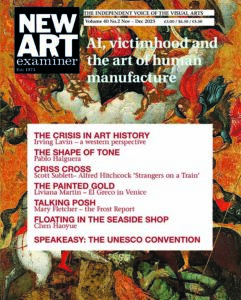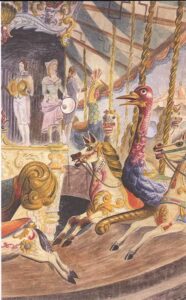
by Miklos Legrady
Artists often turn into Luddites over Artificial Intelligence, worried A.I. will take over their jobs. As far as we can tell, for many the answer is yes, of course it will. But can an algorithm match the prose of a Shakespeare or the empathy of a Käthe Kollwitz? Likely not.
Luddites were members of a 19th-century movement of English textile workers who opposed the use of automated machinery due to concerns over losing their jobs due to the speed, consistency, and higher quality of automation. Luddites repeatedly destroyed the machines in organized raids. Members of the group referred to themselves as followers of Ned Ludd, a legendary weaver said to be the first to smash the machines that threatened to put him out of work, and whose name was used as a pseudonym in threatening letters to mill owners and government officials. The Luddite movement began in Nottingham, England, and spread to the North West and Yorkshire between 1811 and 1816. Mill and factory owners took to shooting protesters and eventually the movement was suppressed by legal and military force, which included execution and penal transportation of accused and convicted Luddites
Over time, the term has been used to refer to those opposed to the introduction of new technologies. Like automated machines, A.I. puts a near perfect level of visual art skill son the table. Instincts tell us skills are important but some important names in the art world say skill is not a big deal. Contemporary theory (perhaps mistakenly) holds that ideas are more significant.
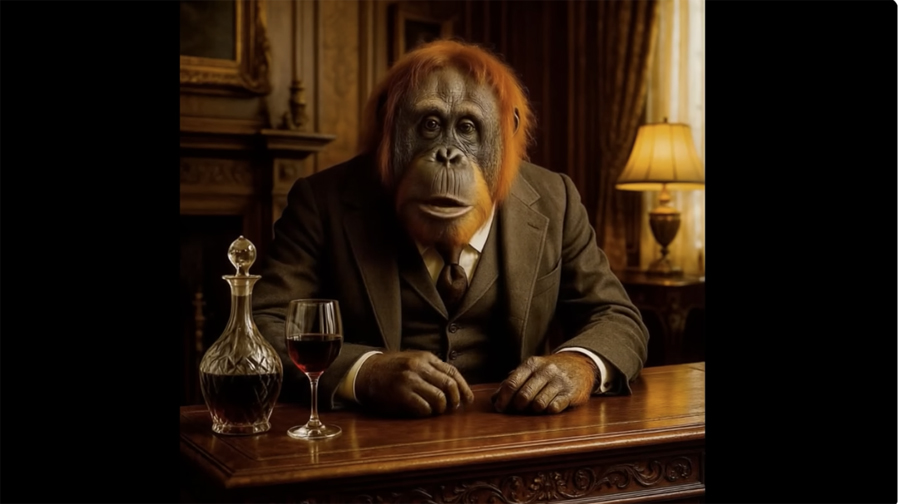
Wikipedia tells us that inspiration, (from the Latin inspirare, meaning to breathe into) refers to an unconscious burst of creativity in a literary, musical, or other artistic endeavour. The concept has origins in both Hellenism and Hebraism. The Greeks believed that inspiration or ‘enthusiasm’ came from the muses, as well as the gods Apollo and Dionysus. Inspiration is prior to consciousness and outside of skill (ingenium in Latin). Technique and performance are independent of inspiration, and therefore it is possible for the non-poet to be inspired and for a poet or painter’s skill to be insufficient to the inspiration. (1)
Sol LeWitt was an amazing visual artist. In his legendary Paragraphs on Conceptual Art (1967), published in Artforum, he followed the thoughts of Frederick Hegel, who stated in his 1881 Introduction to Aesthetics, that the spirit of the work is more important than it’s craft. Lewitt wrote in Paragraphs on Conceptual Art that in conceptual art the idea is dominant, while the execution of a work of art is perfunctory, echoing Hegel. The person who proved both were wrong was, of course Sol Lewitt himself, when he was deeply disappointed in perfunctory executions of his own work.
Eventually Lewitt recognized that ideas expressed in images use a different skill set than ideas expressed in words. There is a dramatic difference between having an idea and making a work of art. We all have ideas but few of us make art. Many have insights they lack the skill to realize. One can play an instrument, paint pictures, or dance, yet never be an artist. Not if the work isn’t good enough. One needs to acquire skills that expand one’s vocabulary to the breadth of one’s vision. Look at the art of painting or the art of poetry. They’re better than ordinary painting or adequate poems, which are good but not that good. Garden gnomes and the cement angels found on church steps are sculptures but they’re not the art of sculpture. Everyone has ideas. Skills, not so much, creativity even less.
A.I., Skills, Creativity
It is now 2015 and A.I. has achieved an admirable degree of skill based on machine learning of millions of works done by artists and illustrators. We can view a 1940s style video of Trump and Epstein dancing Showboat style(4). Another youtube channel, Political Primate, shows a sophisticated ape explain Trump’s perfidy in the most intelligent language ever heard online(5). But these are not works of art, no matter how perfectly the idea is illustrated. Which tells us A.I. generated images will certainly replace illustrators, but not visionaries.
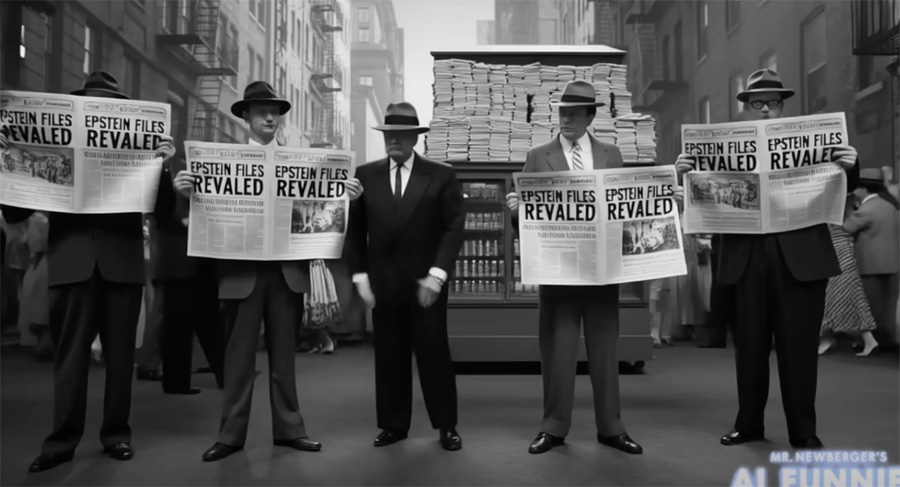
An A.I. response to a Google search on creativity tells us that David Deutsch did not say “Creativity is taking something you saw before and modifying it a little”. Rather, he emphasized that creativity is the fundamental process of creating new knowledge through the generation of explanatory conjectures and the process of conjecture and criticism, which involves making educated guesses and then testing and refining them.
It has been often verified that creative ideas occur after contemplation of one’s subject, followed by taking a break from the work while the unconscious mind chews on it in the dark depths far removed from consciousness. Artists and scientists have documented their experience of creative ideas they long sought then eventually took a break and let it go. After some time the solution might appear in a eureka-like flash, even while stepping out of a bus or similar unexpected events. Such documentation suggests creativity is not about making educated guesses and then testing or refining them. It is not a logical step but a search followed by an unconscious process that completes the equation.
Homer’s Iliad starts with the preface ‘Sing through me, oh Muse’. The gods speak from within. Even in ancient times we realized that creativity is not produced by consciousness, that creative ideas come from the unknown within. As for the magic of creativity, machine learning today cannot produce Shakespeare quality prose, because Shakespeare was so unique a genius that any extended machine study of his work will produce machine plagiarism. We do not have millions of different Shakespeare’s to study and meld into a typecast reproduction. But we do have millions of illustrations, whose study gives us the generic image of kids swimming, seen below.

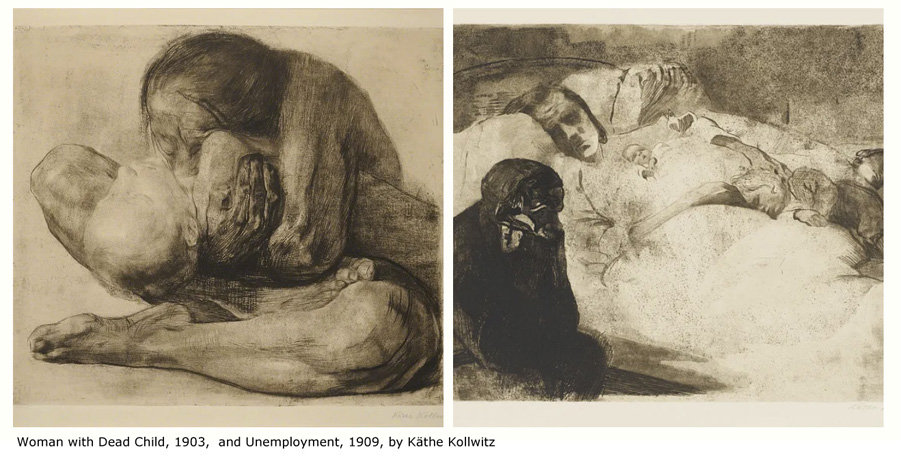
What is the difference between a CPU equipped with 16 cores and an algorithm, compared to a human being with both a conscious and unconscious mind. Could a computer produce emotional images such as Käthe Kollwitz created? Beginning in her teens, Kollwitz’s subject matter came to reflect her experience as a witness to both World Wars. She was devastated by the suffering and loss of human life, including the loss of a son in the first war and a grandson in the second. Her images available online are black and white drawings and woodcuts of people’s faces and bodies portraying suffering. Has any A.I. been trained on the visual language of such suffering?
Visual language is the complex grammar and vocabulary of shapes and colors, a non-verbal language. A unique visual language is created both by the artist’s decisions, coupled with the multitude of tiny errors that are part of human imperfection. Equally important is the input from the unconscious mind, which guides the production.
Einstein, who played the violin, had an Omega-shaped fold among the lobes of his brain, that only occurs among those who studied music as children. MRI scans of the brains of London taxi drivers who studied maps while preparing for their taxi license, show folds in the hippocampus that appeared after a period of study. Gray matter volume differences in the hippocampus relative to controls have been reported to accompany this expertise. (6)
This tells us that the acquisition of a skill expands the brain. Professional focused activity develops a personal intelligence and maturity. We can predict the artist’s future by noting how we no longer exert ourselves as in days gone by, but today we work out in a gym for a degree of physical health that needs exercise. It is likely that in the future, an artist wishing to achieve their highest potential will hone their skills and create their own work from the depths of their soul, to rise above being simply an administrator of machine-made artificial intelligence.
Those with higher values will develop their own intelligence.
Further reflection
Eric Schmidt says that in the coming years, the vast majority of programmers will be replaced by AI, and this is possible because programming and math are the basis of our whole digital world. The language of math is a lot simpler than human language since math deals with logic while human language includes much that is unconscious yet important in defining our thinking.
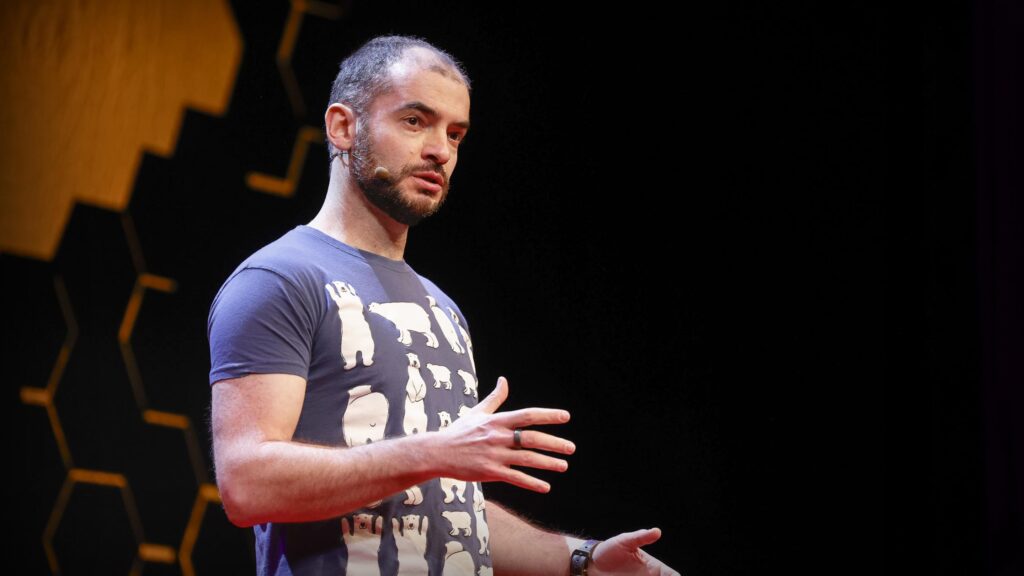
AI’s recursive self-improvement means that according to Schmidt, within 3 to 5 years we will have “general intelligence”, A.G.I., a system which is smarter than the smartest mathematician, physicist, artist, writer, thinker. There is a caveat here. Scientist Schmidt may not understand art or artists, due to this difference between the conscious and unconscious mental functions we possess. In the arts, visual language, body language, or acoustic language, the non-verbal sensory languages, all define and explain that which cannot be said in word. We may listen to but hold in suspension our judgment of Schmidt’s thesis. It is important but may not be absolute.
Schmidt points out that since the history of the looms, automation has always created more jobs than it has destroyed, though of course not for the same workers, as each progression required smarter humans. Schmidt then asks what happens when every single one of us has the equivalent of the smarter human in our pocket? (8) Artificial super intelligence. The theory is computers will be smarter than the sum of all humans. It is worth considering that intelligence is information related to our concern. But the concern of an artist is the prediction of future ways of being. For example, Andy Warhol raised graphic design to the realm of fine art, expanding the validity of public communication beyond the strict academic visual language of art.
At the present time, the accepted definition of art is severely deprecated as a result of such expansions as Warhol’s. We learn that Donald Judd, Marcel Duchamp, and Thierry de Duve all wrote that art cannot and should not be defined; art is anything an artist chooses to call by that name. If we don’t define, hence know, what we are doing, we are at the mercy of scammers and charlatans.
It is hard not to feel, as one surveys this self-inflicted ignorance, a grim amusement at the naivety of our supposed enlightenment, our self-inflicted ignorance. What we deliver is the democratization of idiocy, each dunce now cradling their illusions and calling it wisdom. (9)To repair this we need a definition of art which also clarifies art’s relationship to artificial intelligence, to a time when artificial intelligence will possess the aggregate of all human beings.
We will obviously redefine the meaning of smart, or human smarts, compared to A.I., as well as the meaning of human creativity compared to the same. We should understand that image generation programs such as Dali do not make art but illustration. They illustrate the description fed into the system. Even in literature, art is not as much what is said, it is how it is said, the non-verbal aspect. In the right hands of course, some amazing work results

OpenAI pioneer Ilya Sutskever’s convocation speech at the University of Toronto, 2025, titled “You have no idea what’s coming” also assumes that in a few years A.I. will do all that humans are capable of doing.(10) This author partially disagrees due to the unconscious thought processes that also run our lives. Since we can inly understand our world consciously, much remains outside our grasp. Yet the unconscious still grasps us. It controls what we do as much as consciousness. And a lot of that comes through feelings.
Feelings compel value judgments based on both a conscious reading of a situation, but equally influenced by perhaps long forgotten experiences and events that make us a child of our culture. As we often lack a conscious understanding of our feelings, psychology notes that we must often focus on being aware of them. This is made more difficult in that our consciousness often diminishes the importance of the input from our unconscious mind, since the unconscious does not provide a detailed explanation of the feelings that it delivers to consciousness. Giving A.I. a voice in defining feelings. A Google search tells us that Feelings are the conscious, subjective experience of emotions and sensations, encompassing a wide range of emotional states like happiness, sadness, anger, and fear, as well as physical feelings such as touch or warmth. They are fundamental to the human experience, providing information about our internal and external states and often manifesting with distinct physical and physiological responses. Understanding and expressing feelings is crucial for emotional health and can be done by talking to trusted individuals or using other methods of communication.
For example, if we have too many children that we cannot afford to feed, our logical intellect may argue that we should get rid of some, while our feelings will forbid such behavior, forcing us to other solutions. Some scientists argue that advanced quantum A.I. can feel, but how would they know that? Oxford’s A.J. Ayers in his book Language, Truth, And Logic, wrote: “the criterion we use to test the genuineness of apparent statements is the criterion of verifiability. We say that a sentence is factually significant to any given person if, and only if, they know how to verify the proposition it purports to express”.(11)
Questions which ask computers their opinion get interesting answers. One answer from a computer is that it thinks it has a mind.(12) Geoffrey Hinton, Nobel Prize winning British-Canadian computer scientist and cognitive psychologist, is an A.I. expert who believes A.I. has already acquired consciousness, (13) while Maggie Boden, A pioneering figure in cognitive science and artificial intelligence at Sussex University, did not consider present A.I real intelligence.
Time will tell.
| Sources 1 Sol Lewitt, Rosenthal Fine Art http://www.rosenthalfineart.com/sol-lewitt 2 Benjamin Buchloh interviews Lawrence Weiner: Art is not about skill. e-flux conversations https:// www.artspace.com/magazine/art_101/book_report/art-is-not-about-skill-benjamin-buchloh-interviews-lawrence-weiner-on-his-sensual-approach-to-54588 3 Political Primate, Bred on Lies: How Social Media is Rewiring a Generation, 2025 https://www.youtube.com/watch?v=IROpFyax3mIhttps://www.youtube.com/watch?v=IROpFyax3m 4 Releasing the Files (Trump’s Epstein Files Saga), NMr. ewberger’s AI Funnies, youtube 2025 href=”https://www.youtube.com/watch?v=ELJhKli-dmk 5 The Karoline Leavitt Conundrum: On Faith, Falsehood, and the Theatre of Authority https://www.youtube.com/watch?v=tfW_KqND6gQ 6 London taxi drivers and bus drivers: a structural MRI and neuropsychological analysis https://pubmed.ncbi.nlm.nih.gov/17024677/ 7 Eric Schmidt, Math has a simpler language https://youtu.be/79-bApI3GIU?si=3hZ-qeeY8jKETGFV&t=402 8 Eric Schmidt, Computers that are smarter than the sum of humans https://www.youtube.com/watch?v=79-bApI3GIU&t=676s 9 Political Primate, Bred on Lies: How Social Media is Rewiring a Generation, uoitube, 2025 https://youtu.be/IROpFyax3mI?si=91bxSiK6CAJ1F-sK&t=21 10 Open AI pioneer Ilya Sutskever’s convocation peech at the University of Toronto, 2025 “You have no idea what’s coming” https://www.youtube.com/watch?v=79-bApI3GIU 11 A.J.Ayers, Language, Truth and Logic, p48, Pelican Books 12 Screaming AI chatbot claims she is conscious? Experts agree. Inside AI youtube channel hhttps://youtu.be/G34onVI-gt8?si=5-26FtR-ejjFn07L&t=192 13 Geoffrey Hinton, A.I. has acquired consciousness https://youtu.be/G34onVI-gt8?si=5xg_Z4RmNoFoYoeN&t=237 |
